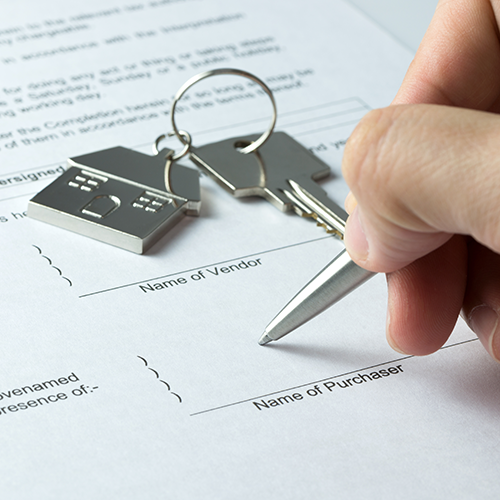Realtors at risk
While most of these interactions conclude without incident, the price of even one encounter going awry can be too high, as headlines across the country demonstrate:
- Arkansas real estate agent Beverly Carter targeted because she was “woman that worked alone.” Beverly Carter, an Arkansas real estate agent, was lured to a showing by a couple posing as buyers. They intended to kidnap Beverly for ransom but ultimately murdered her when their plans went astray.
- Man kills estate agent after complaining new house doesn’t match online description: “I shot my realtor.” Virginia real estate agent, Soren Arn-Oelschlegel, was killed by a buyer client who was unhappy with his recent acquisition. The buyer had purchased a property “sight unseen” based on an online listing and was quoted by neighbors as saying the property did not look the same as it did in the pictures. The buyer’s confrontation with his agent ended in a murder-suicide.
- Realtor showing home pistol whipped, robbed at gunpoint in broad daylight: “I feared for my life.” James Olsen, a Milwaukee realtor, was showing a property to a woman posing as a potential renter when two armed gunmen appeared. The woman, who was with the gunmen, helped to rob and pistol whip James while his wife, unaware of the danger her husband faced, waited just outside in their car.
- “If I didn’t have a firearm, I wouldn’t be here to talk to you:” Realtor describes attack at open house. Colorado realtor, Dawna Hetzler, was setting up for an open house when a prospect asked to see the upstairs of the home. While in the master bedroom, he threatened her with a knife and bear spray. Fearing for her safety, Dawna, who had a concealed carry permit, drew her gun in response. Panicked, the perpetrator doused her in bear spray and ran away. This allowed Dawna to call 911 and she was later taken to the hospital for her injuries.
- Attacked realtor’s testimony reveals how she was nearly killed during her own open house. Virginia realtor, Lenora Farrington, was hosting an open house when a prospect approached. He left when another individual entered the listing but later returned wielding a crescent wrench, which he used to attack Lenora on the head repeatedly. Despite suffering multiple skull fractures, Lenora used her training as a second-degree black belt to defend herself and was eventually able to kick the wrench out of his hands. The perpetrator then stole the cash in her purse and left.
As these incidents show, all realtors are at risk, regardless of their gender, geographic location, neighborhood, or property type. Yet, most agents continue to take safety for granted. According to the 2024 Member Safety Residential Report:
- 86% of respondents had shown a property alone.
- 40% had agreed to meet a new or prospective client alone at a secluded location or property.
- 48% had shown vacant properties in areas with poor or no phone coverage.
- 47% claimed that their brokerage did not have or that the agent did not know if their brokerage had standard procedures in place for agent safety.
Creating a safety plan
So how can you make safety a priority? If your brokerage provides standard or recommended procedures to promote agent safety, that can offer a good starting place. Additionally, here are a few safety tips from the National Association of REALTORS® (NAR) safety instructors for you to consider:
Run background checks on new clients
Search the name of a potential client on search engines and social media sites to help you gather more information on a prospect and identify whether you have any mutual connections. Tools such as Forewarn can also provide you with more comprehensive data, such as the criminal history of a prospect, based on provided phone numbers or emails.
Familiarize yourself with the property ahead of time
Visit a property ahead of time to gather important information about the home. This includes, but is not limited to:
- confirming the availability of cell phone coverage to ensure you’re able to call for help, if needed;
- identifying exits and entry points and making sure they’re in working order to properly secure the property;
- seeing if there are video cameras in or around the house; and
- confirming that the property you’re showing is actually vacant or foreclosed.
If you’re unable to visit the property ahead of time, consider reaching out to the seller to inquire about some of these features.
Practice showing safety
Engage a partner to assist you with open houses and showings. For brokerages, this can offer an extra layer of security for agents and provide a great opportunity for newer agents to gain valuable experience by shadowing their more experienced peers. For open houses, you might also consider:
- requesting extra police patrol during an open house or around vacant properties using the police non-emergency line; or
- using a portable security camera to livestream your open house for an extra layer of safety, provided the appropriate homeowner approval has been secured.
Explore and use safety resources
There are a number of safety apps and technology available to enhance safety for real estate agents. Of these, the most commonly used safety features according to the 2024 Member Safety Residential Report were:
- Find my iPhone feature;
- GPS phone tracking for android;
- SentriKey agent safety feature;
- Forewarn; and
- HomeSnap pro.
Even basic solutions, such as using a shareable calendar to keep co-workers or loved ones informed of your location and the people you’re meeting with, can significantly enhance your safety.
These safety steps can be especially important when meeting with clients for the first time. You can find more information and resources on how to stay protected on NAR’s dedicated safety site.
Victor can help
As a realtor, understanding the unique risks you face and implementing effective safety strategies can make the difference between a successful showing and a dangerous encounter. Victor is here to help. That’s why we’re the only errors and omissions (E&O) insurance policy to offer agent protection, covering reasonable and necessary medical expenses incurred by our insured agents (“agent”) up to a maximum of $50,000 per policy period for bodily injury or harm sustained by an agent while rendering professional real estate services on the premises of a residential property being shown to a client. Payments made under this section do not trigger your deductible obligation or erode your policy limits.
This coverage is subject to certain terms and conditions, including but not limited to a requirement that the injury is caused by a person other than the insured agent (in other words, it cannot be self-inflicted harm), and provided that a police report is filed as soon as practicable after the bodily injury or harm. A copy of the report must be sent to Victor within 90 days of such filing.
To receive a free quote today, visit our website and complete an application. Be sure to note your NAR member ID on the application. Victor and NAR have partnered under the NAR REALTOR Benefits® Program to provide a first-class E&O insurance program for REALTORS®. Several premium credits are available, as allowed by state law, including credits for being an NAR member and holding select NAR designations. For more information, visit our website or contact us at realestate.us@victorinsurance.com.




